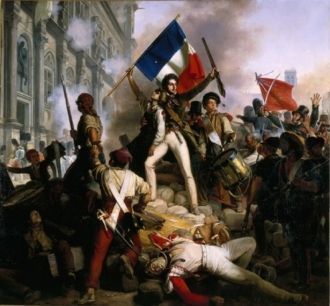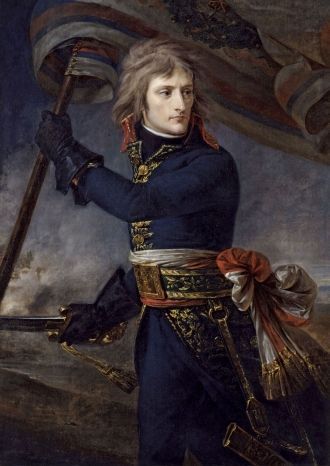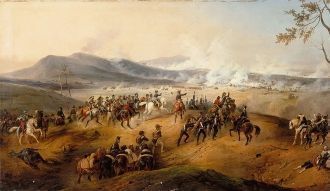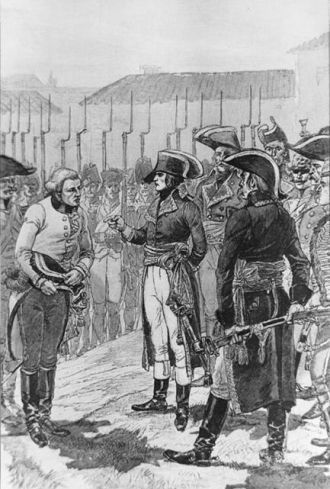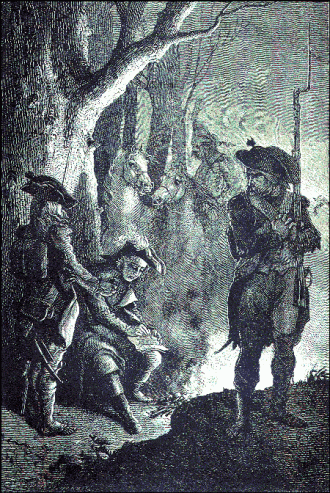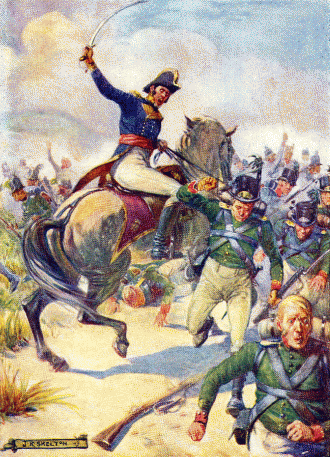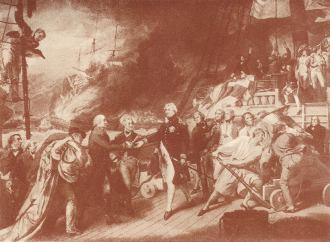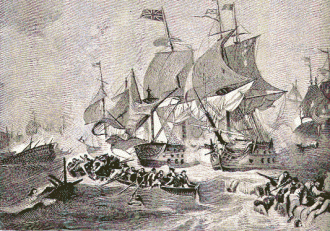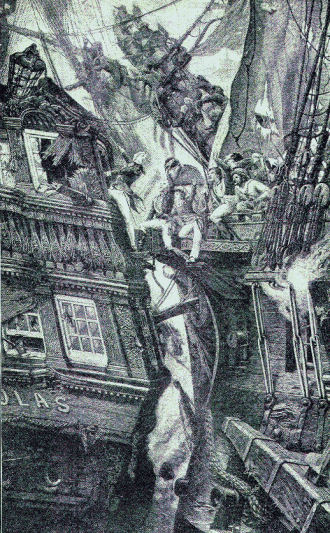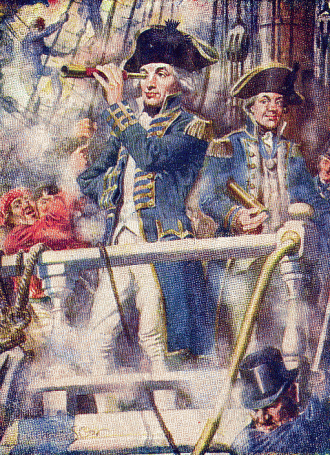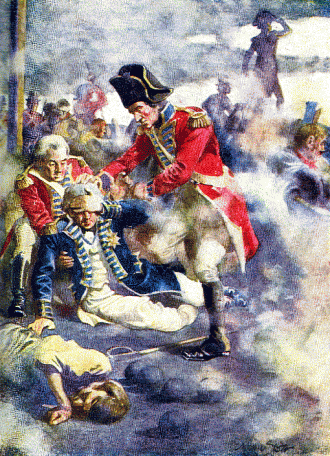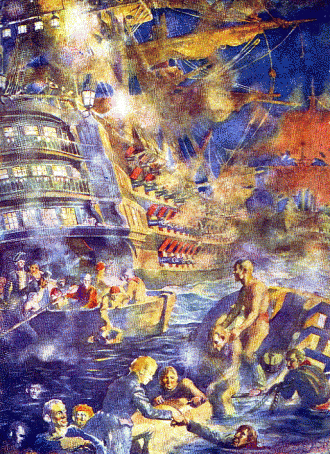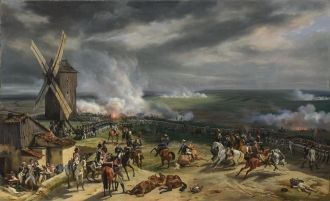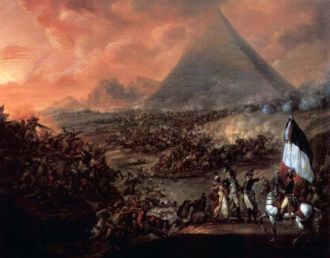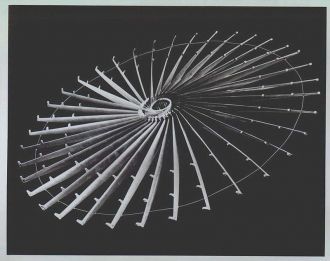France
Europe, Egypt, Middle East, Atlantic Ocean, Caribbean, Indian Ocean
French Revolutionary Wars, wars occurring in the era of the French Revolution and the beginning of the Napoleonic era, the decade of 1792–1802. The wars began as an effort to defend the Revolution and developed into wars of conquest under the empire. The peace obtained in 1801–2 is generally considered to divide the French Revolutionary Wars from the Napoleonic Wars, but the character of the conflict changed only gradually.
The Origins of the Wars
The French Revolution aroused the hostility of foreign monarchs, nobles, and clergy, who feared the spread of republican ideas abroad. Émigré intrigues led the Austrian and Prussian rulers to make the declaration of Pillnitz (Aug., 1791), stating that, if all the powers would join them, they were willing to restore Louis XVI to his rightful authority. French public opinion was aroused. When the Girondists obtained control of the ministry (Mar., 1792) and Emperor Francis II acceded in Austria, war became almost inevitable. It was desired by many of the revolutionists—with the notable exception of Robespierre—who believed that war would insure the permanence of the new order and propagate revolution abroad, and by the royalists, who hoped that victory would restore the powers of Louis XVI.
War with Austria
On Apr. 20, 1792, France declared war on Austria. The French armies lacked organization and discipline, and many noble officers had emigrated. The allied Austrian and Prussian forces under Charles William Ferdinand, duke of Brunswick, quickly crossed the frontier and began to march on Paris. The duke issued a manifesto threatening to raze Paris should the royal family be harmed. This manifesto angered the French and contributed to the suspension of the king (Aug., 1792). The comte de Rochambeau, commanding the northern sector, and the marquis de Lafayette, commanding the center, resigned. Their able successors, the generals Dumouriez and Kellermann, turned the tide when they repulsed the invaders at Valmy (Sept. 20). Dumouriez advanced on the Austrian Netherlands (Belgium), and he seized it after the battle of Jemappes (Nov. 6), while Custine captured Mainz and advanced on Frankfurt.
First Coalition
Late in 1792 the Convention issued a decree offering assistance to all peoples wishing to recover their liberty. This decree, the execution of Louis XVI (Jan., 1793), and the opening of the Scheldt estuary (contrary to the Peace of Westphalia) provoked Great Britain, Holland, and Spain to join Austria and Prussia in the First Coalition against France. Sardinia had already declared war after France had occupied Savoy and Nice (Sept., 1792). On Feb. 1, 1793, France declared war on Britain and Holland, and on Mar. 7, on Spain. Things rapidly turned against France. Dumouriez, defeated at Neerwinden (Mar. 18) by the Austrians, deserted to the enemy; revolt broke out in the Vendée; and Custine lost Mainz to the Prussians (July 23).
In the emergency the first Committee of Public Safety was created (Apr. 6), and a levée en masse (a draft of able-bodied males between 18 and 25) was decreed in August. The Committee, inspired by the leadership of Lazare Carnot, raised armies of approximately 750,000 men; revolutionary commissioners were attached to the commands; defeated generals, like Custine, were executed "to encourage the others."
By the end of 1793 the allies had been driven from France. In 1794 the new French commanders, Jourdan and Pichegru, took the offensive. Jourdan, after defeating the Austrians at Fleurus (June 26, 1794), moved along the Rhine as far as Mannheim; Pichegru seized the Low Countries. On May 16, 1795, Holland, transformed into the Batavian Republic, made peace. Prussia on Apr. 5, 1795, signed a separate peace (the first Treaty of Basel), ceding the left bank of the Rhine to France; Spain made peace on July 22 (second Treaty of Basel).
Warfare against Austria and Sardinia continued under the newly established Directory. France gradually evolved a plan calling for a three-pronged attack: Jourdan was to advance southeastward from the Low Countries; Jean Victor Moreau was to strike at S Germany; and Napoleon Bonaparte was to conquer Piedmont and Lombardy, cross the Austrian Alps, and join with Moreau and Jourdan. During 1795 the French defeated the allies on all fronts, but in 1796 the new Austrian commander, Archduke Charles, took the offensive, defeating first Jourdan, then Moreau, both of whom had retreated to the Rhine by Sept., 1796.
On the Italian front, where an ill-supplied French army had been engaged in desultory and defensive operations until Bonaparte's arrival in 1796, one victory followed another (for details of the Italian campaign, see Napoleon I). Sardinia submitted in May, 1796, and in Apr., 1797, the preliminary peace of Leoben with Austria was signed by Bonaparte, just as Moreau had resumed his offensive in Germany. The armistice was confirmed by the Treaty of Campo Formio (Oct., 1797). Britain, however, remained in the war, retaining naval superiority under such able commanders as Samuel Hood, Richard Howe, John Jervis, and Horatio Nelson. Bonaparte's plan to attack the British Empire by way of Egypt was doomed by Nelson's naval triumph at Aboukir in Aug., 1798.
Second Coalition
Meanwhile, France again aroused the anger of the European powers by creating the Cisalpine Republic and the Roman Republic and by invading Switzerland, which was transformed into the Helvetic Republic. Under the leadership of Czar Paul I a Second Coalition was formed by Russia, Austria, Britain, Turkey, Portugal, and Naples. France defeated Naples and transformed it into the Parthenopean Republic (Jan., 1799), but in N Italy the Austrians and the Russians drove out the French, and in Aug., 1799, General Suvorov crossed the Alps into Switzerland, where Archduke Charles had already won (June 4–7) a victory at Zürich over Masséna. However, disunity between the Austrians and the Russians resulted in disastrous defeats in Switzerland, and Suvorov, after a masterly retreat through the Alps, returned to Russia (Sept.–Oct., 1799).
At this juncture Bonaparte returned from Egypt and by the coup of 18 Brumaire became First Consul (Nov., 1799). The coalition was weakened by Russia's withdrawal, and Napoleon feverishly prepared a campaign to recoup French losses. The campaign of 1800 was decisive. In Italy, Napoleon, after crossing the St. Bernard Pass, crushed the Austrians at Marengo (June 14); in Germany, Moreau crossed the Rhine and demolished allied opposition at Hohenlinden (Dec. 3, 1800). With the Peace of Lunéville—a more severe version of the Treaty of Campo Formio—Austria was forced out of the war (Feb. 9, 1801).
Great Britain, however, continued victorious, taking Malta (Sept., 1800) and compelling the French to surrender in Egypt (Aug., 1801). When Denmark, encouraged by France, defied British supremacy of the seas, Lord Nelson destroyed the Danish fleet in the battle of Copenhagen (Apr. 2, 1801). Nevertheless, the British were war-weary and, after Pitt's retirement, consented to the Treaty of Amiens (Mar. 27, 1802), by which all conquests were restored to France. But the absence of a commercial agreement and Britain's refusal to evacuate Malta was to lead to the resumption of warfare in 1803. Peace had already been made with Naples (Mar., 1801) and with Portugal (Sept., 1801), and in Oct., 1802, France signed a treaty restoring Egypt to the Ottoman Empire.
Source: http://www.encyclopedia.com/topic/French_Revolutionary_Wars.aspx



 France,
France, 